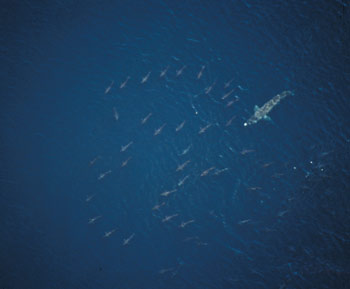Tuna Hardball
US Position Slides At Marrakech
by Rich Ruais
|
Rich Ruais has attended ICCAT meetings for years as a representative of the East Coast Tuna Association, and as the editor of www.tunanews.org. He posted this story from Marrakech, Morocco. During the ICCAT meeting several panels meet simultaneously to discuss separate topics. Decisions made there are brought to the larger meeting and voted on. The Western Atlantic is considered separately from the Eastern Atlantic and the Mediterranean Sea.
I attended the 10-day meeting of the ICCAT (International Com- mittee for the Conservation of Atlantic Tuna) regular annual meeting held in Marrakech, Morocco from November 16 to 24. What follows is an Executive Summary of a grueling and tense meeting. The United States was basically not allowed to see the eastern Atlantic bluefin tuna agreement until Saturday evening, two days before the final ICCAT session, a situation deliberately caused by the European Community (E.C.) to reduce our input and effectiveness.
Panel 2 (bluefin tuna): The news is not good although upcoming quota changes could have been much worse given the east and west stock assessments for Atlantic bluefin tuna. The scientific recommendation was to reduce the western quota to 1,500 mt. The eastern assessment advised quotas between 8,500 and 15,000 mt. The agreements are complex and substantially different than prior agreements.
continue
|

Giant bluefin tuna swimming with a basking shark (the world’s largest shark, it grows to the size of many whales) at Wilkinson’s Basin, 20 miles east of Provincetown, Massschusetts, 1995. There were unexpected schools of giant bluefin of Chatham, MA in November, 2008. ICCAT decisions at the same time were threatening US access. Photo courtesy of Tuna News |
|
Stone Age Pickup
by Mike Crowe
|
Just as early coastal Maine settlers built boats to fish offshore, their Native American forebears were boat builders, whose great boat was the inland waterway canoe.
While they used it some on the coast, for thousands of years before the settlers arrived, they went all over what is now the interior of Maine. Archaeological evidence found just above Old Town, indicates Native Americans occupied the area 7,000 years ago. Plenty of time to work the bugs out of canoe design. The product of untold centuries of development, the result was the highly-developed, sophisticated, ultra light, birch bark canoe.
To fully appreciate how native Americans developed this canoe, it is necessary to see a real birch bark canoe. A well- crafted bark canoe has smooth rounded sides, sharp entry, an efficient wetted surface, and a sweeping sheer line. The vessel is strong and remarkably light weight.
continue
|
| This 16' canoe was a standard size, all-purpose model built by native Americans. The Abenaki tribe used the fiddlehead pattern to decorate the sides. The fleur-de-lis would have been added after the French arrived in the late 1500’s. Henri Vaillancourt built this canoe in 2003. H. Vaillancourt photo |
|
|

